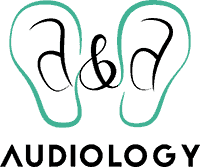- The Connection Between Hearing Loss and Dementia - July 30, 2024
- The Advantages of Rechargeable Hearing Aids - July 16, 2024
- How to Enjoy Music Festivals While Protecting Your Hearing - July 3, 2024
Until you or your friends decide to treat hearing loss with hearing aids, you might still think that hearing aids remain the clunky, unmanageable objects of the past. Today’s hearing aids are much different than those used even a generation ago. In fact, you might not even notice many of the modern hearing aids being worn around you, because they are so sleek and subtle.
We can attribute quite a bit of the upgrades in the hearing aid industry to the computer revolution that has resulted in innovation in a number of other industries. In short, hearing aids went from analog to digital and transformed what to expect from a hearing aid along the way.
Analog Hearing Aids
The first hearing aids were fewer machines and more objects. Arriving in the 1600s, they were large instruments, sometimes called ear horns, that had a trumpet shape. The way they worked was by inserting the smaller end in the ear, sound was gathered and transmitted as directly as possible, eliminating other noise interference, to the ear.
Electric hearing aids weren’t widely used until the early 1900s when a commercially made model became available. Even then, they weren’t portable and so not very convenient. Improvements were made in ensuing years, but it wasn’t until radio technologies improved during World War II that large-scale adoption of hearing aids was possible.
Because of these wartime advancements, hearing aids became smaller, clearer and relied on fewer batteries to operate. Much more functional, they remained analog, using electrical signals to make sound waves louder. They were an improvement from before, but had shortcomings, like the way they amplified every sound in the environment. This changed in the 1990s when the first digital hearing aids became available.
The World Goes Digital
Like almost everything else in the last decade of the twentieth century, hearing aids went fully digital. These powerful machines work much smarter to more accurately mimic ‘normal’ hearing by converting sound information into digital signals. These digital signals can communicate sound to the ear — and the wearer — that is more realistic and pleasing. With analog hearing aids, birdsong, traffic and your chess opponent’s conversation might all be amplified equally. Digitization and modern hearing aid technology now make it possible to more easily isolate the sound information you want to be amplified — that of the conversation you are having — versus the non-important background noise of the world.
Digital hearing aids have become so popular and are so much more advanced in their objective that most manufacturers no longer even produce analog hearing aids.
Bluetooth
In the early 2000s, as digital was eclipsing analog hearing aids, an even newer technology emerged. These days, Bluetooth technology connects the devices you use every day, including most hearing aids.
Instead of requiring special settings on your hearing aids or using accessories, you can automatically connect your smartphone to your hearing devices to make phone calls and conversations with loved ones easier and more rejuvenating. Assistive hearing devices from the past have become obsolete when your smart tv sends the audio of the film you are watching directly to you at your pre-set desired volume.
“There’s an app for that!”
As much as we collectively joke about having an app for everything, using an app with your hearing aids can make your life exponentially easier! Our parents had to take out their hearing aids and manually adjust them, often if not all the time. In some models, making these adjustments required great dexterity, impeccable sight or appointments with audiologists’ offices. Now, when we seek a different setting on our hearing aids, we can simply open up an app to make changes.
Cheers to the Digital Age
Although it comes with its own set of challenges, living in the digital age comes with an unending list of benefits. Our lives can be enhanced with the press of a button. And there is no greater gift than returning ease of connection to people with hearing loss.
Even if you consider yourself an analog person living in a digital world, we can help you integrate the amazing technological advancements into your hearing health. Digital hearing aids aren’t just for the tech gurus in the world, they also make living with hearing aids a simplified solution for the most regular folks. With a wide range of models on the market, we can find a hearing health solution that works best for you and the degree of tech you’re most comfortable with.

